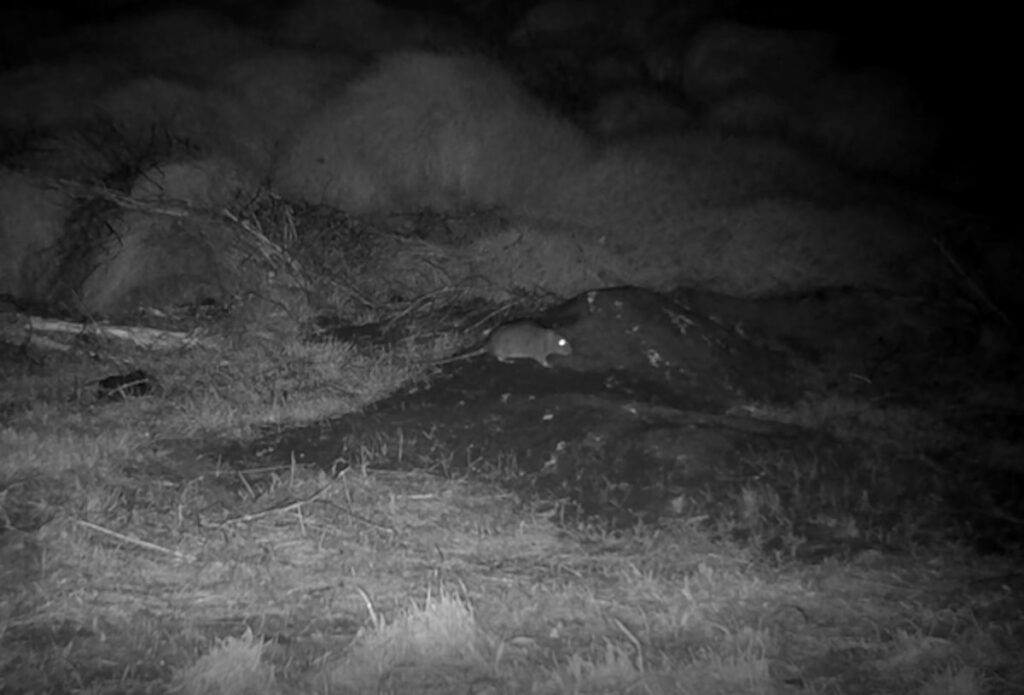A SCOTS island has finally been declared safe for seabirds, following a successful project to remove an “elusive” lone rat which threatened colonies for over a year.
The Lamb, a small island off the East Lothian coastline, has been cleared of its rampant rodent, after signs of rats were discovered on the island in Autumn 2020.
The response project has been led by a team of volunteers from the Lothian Sea Kayak Club, with support from the Scottish Seabird Centre, the Biosecurity for LIFE project, and the RSPB.
Seabirds are the fastest declining group of birds globally due to a multitude of reasons, but invasive non-native species – particularly invasive predators – are one of the top three threats.
An invasive predator is an animal that has been introduced to an island outside of its natural range.
One of the ways these predators can impact native species is by eating the eggs and young of ground-nesting birds.
Seabirds can’t defend themselves from these skilled hunters and they can have a catastrophic impact on breeding colonies.
The Lamb is difficult to access using larger boats and as such, the response effort fell to the Lothian Sea Kayak Club volunteers.
The community-led effort was made possible by this small team of kayakers, led by Tim Gibson, Chris Gordon, and Neil Black.
In total, they made 35 trips out to the island by kayak to control and monitor rats – before concluding through the use of motion-triggered cameras that there was likely only one individual rat present.
The Scottish Seabird Centre says it will now continue to work with volunteers to monitor for signs of invasive predators on the Lamb.

This is in conjunction with surveillance measures on Craigleith and Bass Rock to protect these internationally important seabird habitats.
Emily Burton, Conservation Officer at the Scottish Seabird Centre said: “There are a few different pathways, but the main possibilities are that the rat was accidentally taken into the vicinity of the island by a boat, or it swum out from the shore by itself.
“Rats are invasive predators and can cause huge problems for native species when introduced to an island outside of their natural range.
“It’s very likely that this rat will have been eating eggs and chicks on the island during the breeding season.
“However, our greater concern was that there might have been more than one animal.
“We carried out control and monitoring work for more than a year before we had enough evidence to suggest that this was just a single animal.
“As you can imagine, if multiple rats reach an island the population can grow very quickly and become very difficult to manage.”
Emily continued: “Once they reach a remote island, rats can be very difficult indeed to remove.
“They are intelligent animals with a healthy fear of new things, meaning that control equipment placed around the island is often avoided.
“For the most part, rodenticide was placed in special protective housing by trained and licenced volunteers.
“These boxes were placed around the island and regularly checked and refreshed.
“These measures were removed during the summer months, when we stop island access to avoid disturbing the breeding birds.”
Sarah Lawrence, Biosecurity Officer with the Biosecurity for LIFE project said: “The volunteers have spent two winters navigating harsh weather, covid restrictions, and the frustrations of seeking a very elusive rat.
“Thanks to their hard work we are confident that the Lamb’s puffins and other seabirds will return to nest on a rat-free island this year.
“It’s been a pleasure to work with the Scottish Seabird Centre and Lothian Sea Kayak Club on this project, and we look forward to continuing this collaboration to protect the Forth Islands SPA from the arrival of invasive predators in the future.

